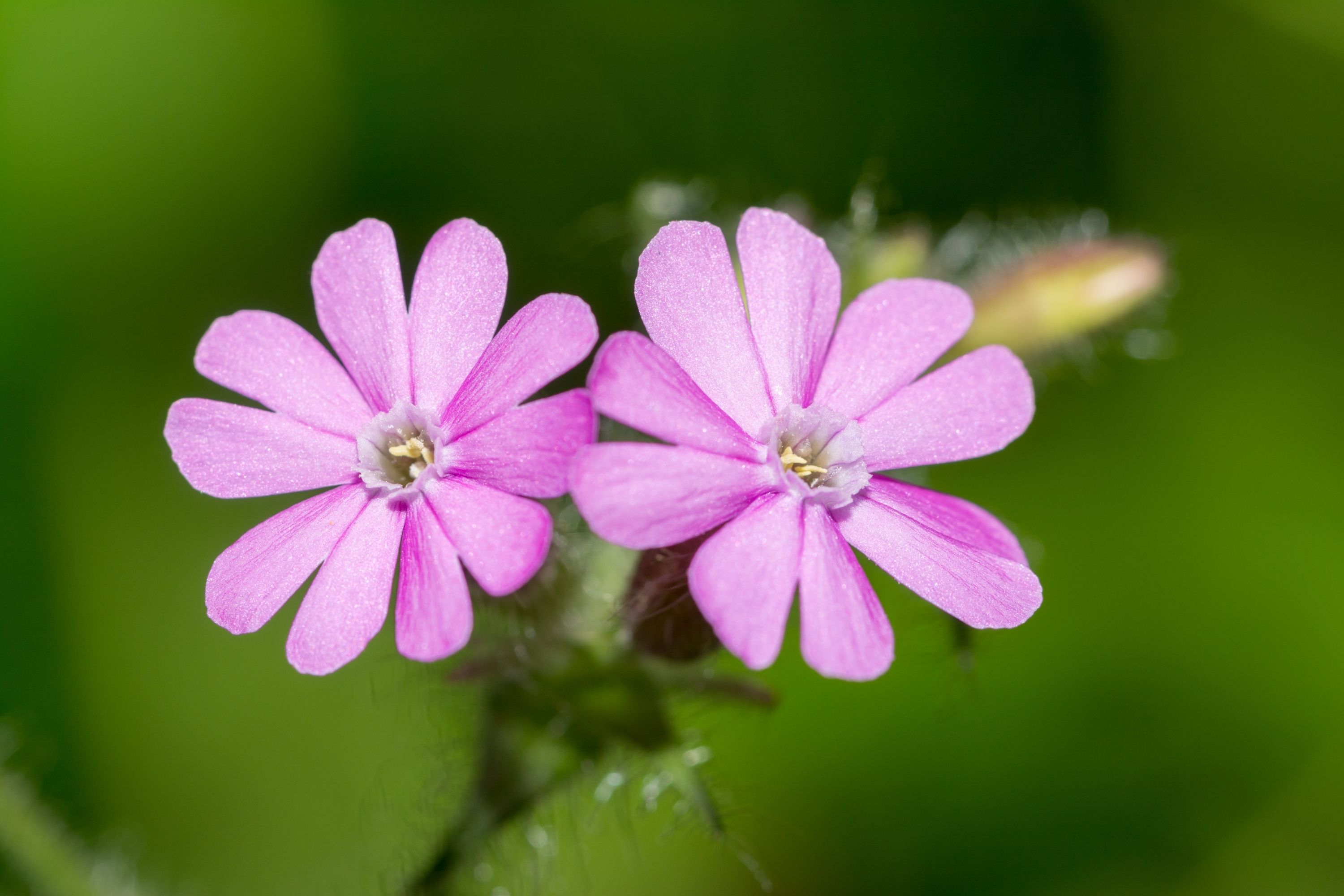Red campion
(Silene dioica)

Description
Silene dioica, commonly known as red campion or red catchfly, is a herbaceous plant species belonging to the Caryophyllaceae family. It is native to Europe and Asia, but it has been introduced and naturalized in other parts of the world. This plant has been used for medicinal and culinary purposes, and it also has ornamental value due to its attractive flowers. In this article, we will explore the taxonomy, morphology, distribution, ecology, uses, and cultivation of Silene dioica. Taxonomy: Silene dioica was first described by Carl Linnaeus in 1753, and it belongs to the genus Silene, which contains about 700 species of herbaceous plants distributed worldwide. The specific epithet "dioica" refers to the fact that this species has separate male and female flowers on different plants, a characteristic known as dioecy. The common name "red campion" refers to the bright red color of its flowers, while the name "catchfly" refers to the sticky secretion on the stems that can trap small insects. Morphology: Silene dioica is a perennial herb that can reach a height of 30-90 cm. It has a taproot and a branched stem that is erect, hairy, and sticky. The leaves are opposite, ovate to lanceolate in shape, and have short petioles. They are also hairy and slightly sticky, and they can be up to 10 cm long. The flowers are produced in loose cymes at the ends of the stems. Each flower has five petals that are fused into a tube, and they are bright pink to red in color. The flowers are also slightly fragrant and are visited by bees and butterflies. The fruit is a capsule that contains many small seeds. Distribution: Silene dioica is native to Europe and Asia, where it is found in a wide range of habitats, including woodlands, meadows, hedgerows, and rocky slopes. It has also been introduced to other parts of the world, including North America, Australia, and New Zealand, where it has become naturalized in some areas. In its native range, it is common and widespread, but in some areas, it is considered a weed due to its ability to colonize disturbed areas and outcompete native vegetation. Ecology: Silene dioica is a dioecious plant, which means that male and female flowers are produced on separate plants. This strategy has evolved to increase outcrossing and genetic diversity in the population. The flowers are pollinated by bees and butterflies, which are attracted to the bright colors and fragrance. The sticky secretion on the stems is thought to have evolved as a defense mechanism against herbivores, by trapping small insects that may try to climb the stem. The plant is also tolerant of a wide range of soil types and can grow in both sunny and shaded areas. Uses: Silene dioica has a long history of use in traditional medicine. The leaves and roots have been used to treat a variety of ailments, including diarrhea, coughs, and skin infections. The plant also contains saponins, which are compounds that have been shown to have anti-inflammatory and anti-cancer properties. In addition to its medicinal value, Silene dioica is also used in cooking. The leaves can be eaten raw or cooked and have a slightly bitter taste. They can be used in salads, soups, and stews, and are a good source of vitamins and minerals. The flowers can also be used as a garnish or to add color to dishes. Cultivation: Cultivating Silene dioica is relatively easy, and it can be grown from seeds or by dividing established plants. Here are some tips for growing this plant: Choose a site: Silene dioica prefers a sunny or partially shaded site with moist, well-drained soil. It can tolerate a range of soil types, but it prefers neutral to slightly alkaline soil. Prepare the soil: If the soil is compacted, loosen it with a garden fork and add organic matter such as compost or well-rotted manure to improve drainage and fertility. Sow the seeds: Silene dioica can be sown outdoors in the spring or fall, or indoors in the winter. If sowing outdoors, scatter the seeds on the soil surface and lightly rake them in. If sowing indoors, sow the seeds in seed trays or pots filled with potting soil and keep them moist and warm until they germinate. Water and fertilize: Keep the soil evenly moist but not waterlogged. Silene dioica does not require much fertilization, but you can apply a balanced fertilizer once or twice a year to promote healthy growth. Maintain the plants: Once the plants have established, they require little maintenance other than occasional watering and weeding. You can also deadhead the flowers to encourage more blooms. Propagate the plants: Silene dioica can be propagated by dividing established plants in the spring or fall. Carefully dig up the plant and divide it into several sections, each with a healthy root system and some leaves. Replant the divisions in prepared soil and water well. In conclusion, Silene dioica is a beautiful and useful plant that can be easily grown in a variety of conditions. By following these simple steps, you can cultivate this plant in your garden and enjoy its colorful blooms and nutritious leaves.
Taxonomic tree:







